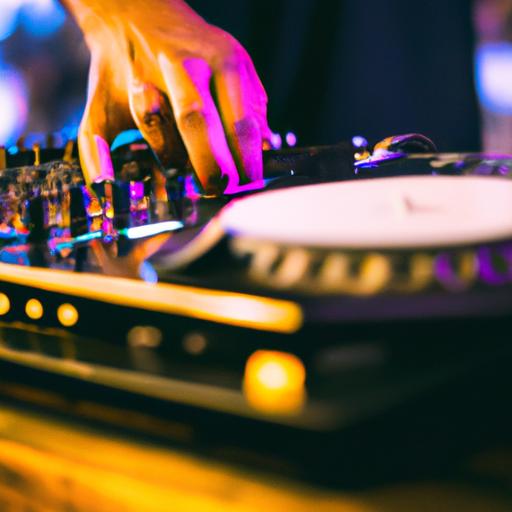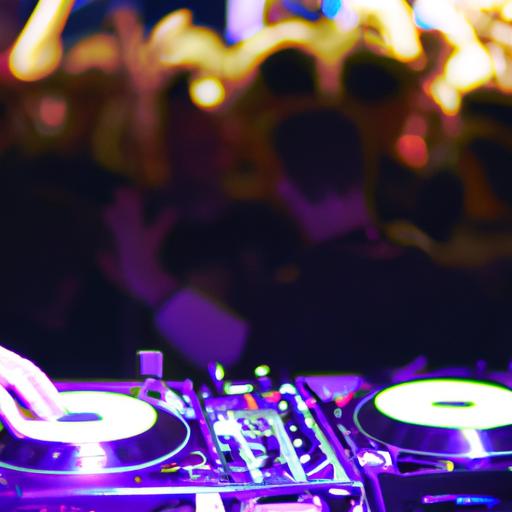DJ Turn Tables: The Heartbeat of the Music Industry

DJ turn tables have been the foundation of the music industry for decades. These devices have been utilized by DJs to generate beats and blend songs to keep the party alive. Over the years, DJ turn tables have undergone significant transformations, but their significance has remained steadfast. In this article, we will delve into the history, various types, features, selection criteria, and maintenance of DJ turn tables.
The Evolution of DJ Turn Tables
The origins of DJ turn tables can be traced back to the 1940s when vinyl records first entered the scene as the primary source of music for DJs. Turntables were employed to play these records. In 1972, the Technics SL-1200 was introduced as the first DJ turn table, revolutionizing the industry with its high torque motor and pitch control.
As the music industry progressed, so did the DJ turn table. In the 1980s, digital turntables emerged, allowing DJs to manipulate music in ways that were previously unimaginable. The introduction of CDJs in the 1990s added even more flexibility to the DJ booth, enabling DJs to mix and scratch CDs.
Today, with the rise of digital music, DJ turn tables have evolved to include software and controllers, granting DJs even greater creative freedom. Despite the technological changes, the DJ turn table remains an indispensable tool for DJs to create and mix music.
The Many Faces of DJ Turn Tables
There are four main types of DJ turn tables: belt-driven, direct-drive, hybrid, and digital turn tables.
Belt-driven Turntables
Belt-driven turntables, the oldest type of turntable, employ a belt to connect the motor to the platter, thus rotating the vinyl record. These turntables are renowned for their smooth and quiet operation. However, due to the risk of the belt slipping, they are not ideal for DJing as it can cause the music to skip.
Direct Drive Turntables
Direct-drive turntables, the most prevalent type in the DJ industry, directly connect the motor to the platter, providing superior torque and speed stability. These turntables are perfect for scratching and beat matching, making them the preferred choice for most DJs.
Stay tuned for the following sections, where we will explore hybrid turntables, digital turntables, and the features of DJ turn tables.
Hybrid Turntables and Digital Turntables
Hybrid Turntables
Hybrid turntables combine analog and digital technology, allowing DJs to play vinyl records while also having built-in digital features for mixing and manipulating music. These turntables are perfect for DJs seeking the best of both worlds and the flexibility to seamlessly switch between analog and digital sources.
Digital Turntables
Digital turntables are the latest addition to the DJ turntable family. They are designed to work in tandem with DJ software and controllers, enabling DJs to mix and manipulate their music in unprecedented ways. Digital turntables offer a broad range of features such as looping, sampling, and effects, making them the most versatile turntables available.
Essential Features of DJ Turn Tables
DJ turn tables come equipped with several features that contribute to their functionality. Here are some of the key features to consider when selecting a DJ turn table:
Tonearm and Cartridge
The tonearm, which holds the cartridge responsible for reading the music from the vinyl record, plays a crucial role in determining the sound quality. The tonearm’s weight, length, and shape all impact the music’s audio. Cartridges are available in different types, including moving magnet and moving coil, each with its unique sound characteristics.
Platter
The platter is the rotating disk that holds the vinyl record. It is vital for the platter to be smooth and stable to prevent music skipping and warping. Some turntables even come with removable platters, making cleaning and maintenance easier.
Pitch Control
Pitch control allows DJs to adjust the speed of the music to match the tempo of the next track, facilitating seamless transitions and beat matching.
Motor and Drive System
The motor and drive system provide the power to rotate the platter. Direct-drive turntables feature a motor directly connected to the platter, while belt-driven turntables rely on a belt. The quality and power of the motor directly influence the turntable’s torque and speed stability, which in turn affects the sound quality.
In the next section, we will explore how to choose the right DJ turntable for your specific needs.
Choosing the Perfect DJ Turn Tables
Selecting the ideal DJ turn tables can be a daunting task, given the wide variety of options available. Here are some factors to consider when making your decision:
Budget
First and foremost, consider your budget. DJ turn tables come in a range of prices, from affordable to high-end. Determine your budget and stick to it to avoid overspending.
Turntable Type
Consider the type of DJing you plan to do. If you’re a beginner, a direct-drive turntable is an excellent choice. For scratch DJs, a turntable with a higher torque motor is preferred. If you desire a more versatile option, a hybrid turntable may best suit your needs.
Features
Take into account the features that align with your DJing style. Pitch control is essential for beat matching, while a reverse function can enhance scratching. Other features to consider include USB connectivity, built-in effects, and motor braking.
Brand
Finally, consider the reputation of the turntable brand. Look for a well-established brand with a history of producing quality DJ equipment. Customer reviews and ratings are valuable in ensuring that you select a turntable that meets your needs.
Maintaining and Caring for DJ Turn Tables
Proper maintenance and care are vital to ensure that your DJ turn tables perform flawlessly for years to come. Here are some tips to keep in mind:
Cleaning and Dusting
Regularly clean and dust your turntable to prevent the accumulation of dirt and debris. Use a soft brush to remove dirt from the stylus and platter and a microfiber cloth to clean the turntable’s body.
Lubrication
Regularly lubricate the turntable’s motor and moving parts to ensure smooth operation. Use a high-quality lubricant specifically designed for turntables.
Proper Handling and Storage
Handle your turntable with care and store it correctly when not in use. Avoid exposing it to direct sunlight or extreme temperatures, as these can damage the turntable’s components.
Troubleshooting Common Problems
If you encounter issues with your turntable, consult the manufacturer’s manual for troubleshooting tips. If you’re unable to resolve the problem, consider seeking assistance from a professional technician or repair service.
By following these maintenance and care tips, you can ensure that your DJ turn tables remain in excellent condition, providing you with years of optimal performance. So, embrace the power of DJ turn tables and let the beats keep flowing!

